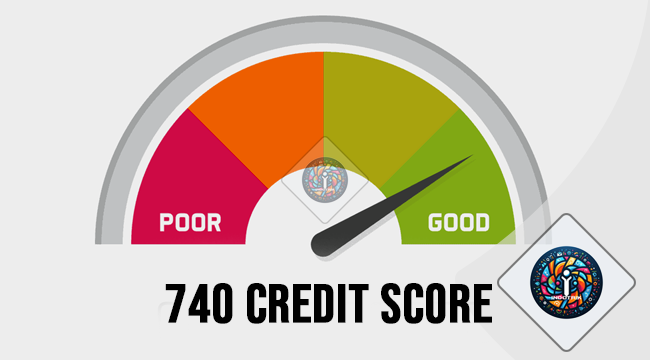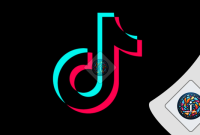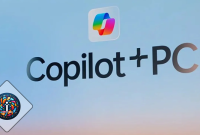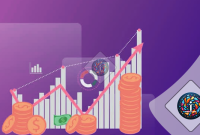
Picture this: You’re applying for a loan or a credit card, and the banker smiles approvingly. That’s the kind of respect a 740 credit score commands. It’s not just a number—it’s your golden ticket to financial advantages, from low interest rates to premium credit cards.
But what exactly does a 740 credit score mean? And how can you make the most of it? Whether you’ve already hit this milestone or are working toward it, this guide will dive deep into what makes a 740 score special, how it impacts your financial life, and tips to keep it strong.
What Is a 740 Credit Score?
A 740 credit score is a big deal in the world of personal finance. It lands you squarely in the “very good” category, as defined by FICO, one of the most commonly used credit scoring models. Here’s the breakdown:
- 300–579: Poor
- 580–669: Fair
- 670–739: Good
- 740–799: Very Good
- 800–850: Exceptional
Hitting 740 means you’re doing many things right—paying bills on time, managing debt wisely, and demonstrating financial responsibility. It also puts you in an elite group of borrowers who enjoy better lending terms and exclusive perks.
Why Is a 740 Credit Score So Valuable?
Achieving a 740 credit score isn’t just for bragging rights—it comes with tangible benefits that can save you serious money and open up opportunities.
1. Lower Interest Rates
Lenders see you as a low-risk borrower, which means you’ll often qualify for lower interest rates on loans, mortgages, and credit cards. Over time, this can save you thousands of dollars.
2. Premium Credit Cards
With a score of 740, you’ll have access to credit cards with high credit limits, attractive rewards, and exclusive perks like travel insurance, cashback, and priority boarding.
3. Easier Loan Approvals
Whether it’s a car loan or a mortgage, lenders are more likely to approve your application quickly and with fewer hoops to jump through.
4. Lower Insurance Premiums
In some states, your credit score can affect your car or home insurance rates. A 740 score often means significant savings.
5. Better Negotiating Power
From leasing apartments to negotiating terms with lenders, a high credit score puts you in the driver’s seat.
How Do You Achieve a 740 Credit Score?
If you haven’t reached 740 yet, don’t worry—it’s an achievable goal. Here are the key steps:
1. Always Pay on Time
Your payment history makes up 35% of your credit score. Set reminders or automate payments to ensure you never miss a due date.
2. Keep Credit Utilization Low
Aim to use less than 30% of your available credit. For example, if your credit limit is $10,000, try to keep your balance under $3,000.
3. Avoid Hard Inquiries
Limit how often you apply for new credit. Multiple hard inquiries in a short time can temporarily lower your score.
4. Maintain Long-Term Accounts
The length of your credit history contributes to your score. Keeping old accounts open—even if you don’t use them—can help.
5. Diversify Your Credit Mix
A combination of credit types, like credit cards, auto loans, and mortgages, can boost your score.
How to Make the Most of Your 740 Credit Score
Having a 740 credit score is like holding a VIP pass, but it’s up to you to use it wisely. Here are ways to maximize the perks:
1. Refinance Existing Loans
With a high score, you might qualify for better interest rates. Refinancing a mortgage or auto loan could lower your monthly payments and save you money.
2. Negotiate Credit Card Rewards
Call your credit card company and ask for an upgrade. Many issuers offer better rewards and perks to customers with high scores.
3. Monitor Your Credit Regularly
Even with a great score, errors can sneak onto your credit report. Check your report annually to ensure everything is accurate.
4. Avoid Complacency
A 740 score is fantastic, but resting on your laurels could lead to a slip. Continue practicing good financial habits.
The Day I Hit 740: A Personal Story
I’ll never forget the day I crossed the 740 threshold. It wasn’t an overnight success—far from it. There were months of paying down debt, monitoring my credit utilization, and resisting the urge to splurge on my credit cards.
But the real turning point? I started treating my credit score as a long-term game rather than a quick fix. When I finally checked my report and saw that 740 staring back at me, it felt like a personal victory. The best part? I negotiated a lower interest rate on my car loan the very next week, saving me hundreds of dollars.
Common Myths About a 740 Credit Score
Even with a high score, misconceptions abound. Let’s debunk a few myths:
1. “You Don’t Need to Monitor Your Credit Anymore”
Wrong! Even small errors can bring down your score. Stay vigilant.
2. “A 740 Score Guarantees the Best Rates”
While it gets you close, some lenders reserve their best offers for scores above 760.
3. “Closing Old Accounts Improves Your Score”
Actually, closing accounts can hurt your score by reducing your credit history length.
The Road Beyond 740
A 740 credit score is a fantastic milestone, but why stop there? Pushing into the “excellent” range (800 and above) unlocks even more perks, including the absolute best lending terms. Here’s how you can take it to the next level:
- Pay in Full Each Month: Avoid carrying balances to prevent interest charges.
- Be Selective About New Credit: Only open accounts that truly benefit your financial goals.
- Continue Learning: Stay informed about factors that influence your credit score.
Final Thoughts: Celebrate Your 740 Credit Score
A 740 credit score is more than just a number—it’s a testament to your financial discipline and smart decision-making. It opens doors to opportunities that can enhance your financial well-being, from lower rates to premium perks.
But remember, the journey doesn’t end here. Whether you’re looking to maintain your score or aim even higher, staying proactive and informed is key. So go ahead, celebrate your achievement—just don’t forget to keep building on it. Your future self will thank you!





